A review of allegations of plagiarism in:
Breaking India: Western Interventions in Dravidian and Dalit Faultlines, by Rajiv Malhotra (RM), Aravindan Neelakandan (AN)
(Amaryllis, 2011)
By
Independent Readers and Reviewers
- Allegation that on p. 26 authors plagiarized from Wilhem Halfbass (1988).
Analysis: This is not true: In the verbatim quote the authors have exactly specified the source in endnote 19 of chapter 3 (see p. 478). The source being Halfbass (1988, p.3). The two lines which immediately follow after that are not a ‘verbatim quote’ and it is very obvious to the reader that it is a continuation from the same source as cited above. This is standard academic practice known to anyone who publishes in scientific journals. Unless it is a verbatim quote, an exact citation for each statement is not necessary.
Recommendation: It will be better to add an (ibid.) in the next edition.
For the original text and references see:
- Allegation that on p. 26 authors plagiarized from Maurice Olender (1992)
Analysis: This seems more to be a simple copy editing slip, because the closely preceding references (Nr. 16, 17 and 18) are to Olender (1992) which makes it substantially clear to the reader that the ensuing text and context is heavily drawn from Olender (1992). This is also evident from neighboring references (Nr. 7, 25 and 26) attributed to Olender (1992). If there were any mal intentions, Olender would not be referred at all. This is a simple mix up between Max Mueller and Olender for attribution, not a case of authors wanting to avoid attributing at all.
Recommendation: Endnote 21 in p. 478 of Breaking India should be Olender. This can be followed by the current reference to Max Muller.
For the original text and references see:
Overall assessment on Breaking India
Based on these two very minor aberrations a plagiarism test by standard software (such as TURNITIN http://en.writecheck.com/) would not throw a figure more than acceptable limits. Of course this varies from subject areas and/or type of publications. But the main issue in plagiarism is an act of direct appropriation of ideas and using direct quotes while claiming to be the author’s own. This, too, is tolerated if it does not cross the norm range. There is nothing to suggest in the above instances that was appropriation of ideas or quotes without acknowledgment to third parties.
Recommendation: No change.
A review of allegations of plagiarism in:
Indra’s Net: Defending Hinduism’s Philosophical Unity, by Rajiv Malhotra (HarperCollins, 2014)
By
Independent Readers and Reviewers
- Allegation that on p. 158 author has plagiarized from Nicholson (2010)
Analysis: Not a valid criticism. The text in question is sufficiently rephrased not to justify putting it under ‘quotes’. This means that by standard practice it is not needed to immediately place the reference at the end of the sentence. Yet, author does specify the exact reference for this phrase which is from Nicholson (2010, p. 3). There is absolutely nothing erroneous or disingenuous about it.
Recommendation: No change.
For the original text and references see:
- Allegation that on p. 160 author plagiarized from Nicholson (2010)
Analysis: This is no plagiarism. The complainant does not seem to be well versed with scientific publishing. Author rightly refers to both the original sources as used by Nicholson (2010) in p.116. Firstly, there is sufficient paraphrasing not to justify putting them under ‘quotes’. Yet, at the exact places the end-notes 14 and 15 direct the reader to the original sources. Endnote 15 is exactly Vishnu Purana 6.7.35 (unless the complainant implies that Nicholson, 2010 holds to copyright to Vishnu Purana). Endnote 15 is exactly as used by Nicholson (2010). This is again a minor glitch which can be revised in next edition/s.
Furthermore, the chapter in question (Chapter 8) is replete with references to Nicolson, 2010. See Endnotes 1, 3, 5, 6, 7, 9, 17, 18, 20, 27, 28, and 29. This makes it very evident to the reader of the continuity of the passages and does not give a sense of disconnecting the reader from Nicholson as source. This is consistent with the best academic practices.
Moreover, the complainant makes an error in stating that ‘Malhotra inserts two endnotes, nos 14 and 15. On page 326 of Indra’s Net’. The endnotes are on page 328!
Recommendation: End note 15 to be written BS 4.1.15 and Ch. Up. 6.14.2 and it can be optionally added, ‘as also stated in Nicholson, 2010’.
For the original text and references see:
- Allegation that on p. 162-163 author plagiarized from Nicholson (2010)
Analysis: This criticism reflects lack of probity of the complainant and not the author. There are two minor but important differences in the text from Nicholson (2010, pp.122-123) and the text by author.
1. Author inserts the word ‘reconciled’ which is not used by Nicholson.
2. Author leaves out ‘contemplative’ which was used by Nicolson.
These two changes can be attributed to author’s own literary license which makes a different reading of the intent as used by Nicholson. Therefore, author is sufficiently justified to leave out ‘quotation’ marks as this is NOT verbatim. In fact, using ‘quotations’ would be a case of false attribution to the sourced author. Also, author gives attribution to Nicholson in end note 18 (p.329) very appropriately without using ‘quotation’ which is the correct method.
Recommendation: No change.
For the original text and references see:
- Allegation that on pp. 162-163 author plagiarized from Nicholson (2010) and wrongly attributed to Vivekananda (and not Vijnanabhikshu)
Analysis: The complainant is not accurate that the words are verbatim. The words used are phrases like ‘emphasized conflict and contradiction’ and ‘philosophical and interpretive ingenuity’. As per the norms under phraseology and plagiarism, common phrases can be used independently. The whole sentence/s is not verbatim and hence does NOT justify quotes. Yet, author has referred to Nicholson everywhere surrounding the text which means the reader is already clear by now that these discussions come from Nicholson. There is no need to add reference for Nicholson at the end of each sentence. This is especially true when author uses these phrases to typify Vivekananda and not Vijnanabhikshu as done in the original by Nicholson. It would have been misleading if he claimed direct attribution to Nicholson. Using the phrases to characterize Vivekananda instead of Vijnanabhikshu is totally acceptable as a part of the literary license of the author because this is not inconsistent with the immediately preceding texts. The whole point of the section is to show the continuity from Vijnanabhikshu up to Vivekananda. For example p. 162 last paragraph begins with the sentence ‘Vijnanabhikshu had contributed to the emergence of a proto-Hinduism to which Vivekananda became a worthy heir….’ And then author uses the similar phrase to typify Vivekananda which was used earlier for Vijnanabhikshu. There is nothing wrong here. The complainant seems to confuse between ‘plagiarized’ texts and ‘similar’ texts. This is an important distinction in scientific peer-review because of which it is standard that assessments of plagiarism is not made mechanically but by reasonable assessment of what is plagiarized and what is similar.
Recommendation: To clear any misunderstanding, author might add that ‘Vivekandanda’s challenge, consistent with Vijnanabhikshu’s, was to….’
For the original text and references see:
- Allegation that on p. 329 author has self-plagiarized
Analysis: This complainant finds this item ‘just for fun’. It would have been a case of self-plagiarism if author had attributed either endnote 19 or 20 to himself! But he has attributed both of them to Nicholson (2010, pp.65, 78). As for plagiarism from Nicholson is concerned, it again needs to be noted that none of the three sentences in the highlighted text by the complainant is verbatim and hence cannot be accurately put within ‘quotations’. Additionally, author has cited Nicholson appropriately.
Recommendation: No change.
For the original text and references see
- Allegation that on Endnote 2, p. 344 author plagiarized from Nicholson (2010)
Analysis: This appears to be an omission which needs to be corrected in a revised version. It is certainly not plagiarism because in the same endnote the author has referred Nicholson twice, each time with exact page numbers. See second half of endnote 2 on page 345 for references to Nicholson (2010, pp.52-53) and Nicholson (2010, p.39). If there was any intent to plagiarize, the author would have refrained from referring to Nicholson at all. This again brings one to surmise that the complainant is on a witch-hunt and not applying reasonable judgment which is essentialin any fair review.
Recommendation: No change.
For the original text and references see
- Allegation that on Endnote 2, p. 344 author plagiarized from Nicholson (2010)
Analysis: The response follows from response nr. 6 above. Author does cite Nicholson several times in the second half of the endnote and also writes ‘According to Nicholson’. This is not a lack of attribution to Nicholson. Again, unless the entire text is verbatim it cannot be put under quotes or else it would be a false quotation.
Recommendation: No change.
For the original text and references see:
- Allegation that on Endnote 2, p.345 author used deception in double referencing Nicholson (2010).
Analysis: This is a strange self-contradiction by the complainant. The reader of Endnote 2 will be sufficiently clear that there is no misappropriation of the original author’s intent. By the prefix ‘According to Nicholson’ this is only made stronger. This is not even remotely plagiaristic. This is a combination of scientific citation and use of literary license to convey an idea clearly to the reader. This is how authors are expected to add value and extend others’ scholarship.
Recommendation: No change.
For the original text and references see
- Allegation that on Endnote 4, p.346 Indra’s Net: criticism that RM has not cited Nicholson (2010).
Analysis: There is sufficient paraphrasing not to justify quotations. But, nevertheless, Nicholson could have been cited.
Recommendation: The following should be added at the closing of Endnote 4: Summarized from Nicholson 2010, 37, 45-46
Overall assessment of Indra’s Net:
The overall evidence does not even remotely suggest plagiarism. The complainant often confuses ‘similar’ text with ‘plagiarized’ text, not being able to identify differences between the two as per not only the rules but also norms of scientific publishing. To perfect this important work for the future, we recommend the corrections be made as indicated above in a future edition. These aberrations fall well within the statistically acceptable range of errors in a writing of the scale as presented in this book. An overall assessment not only overrules any impropriety but appreciates the author’s deftness involved in presenting such a complex matter for the reader’s easy access.

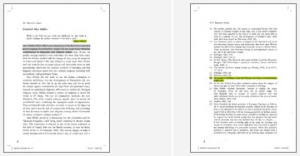
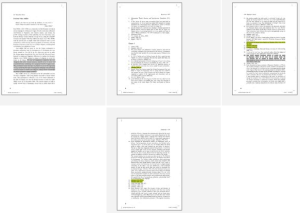
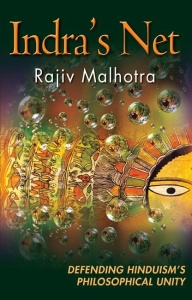

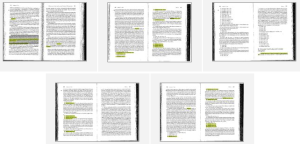
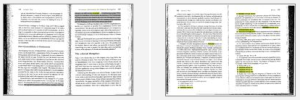
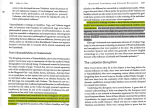



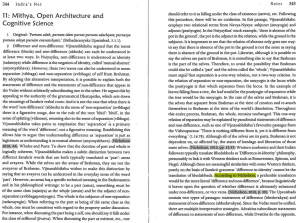
dr.v.s vedam
Sincerely.
Bijender